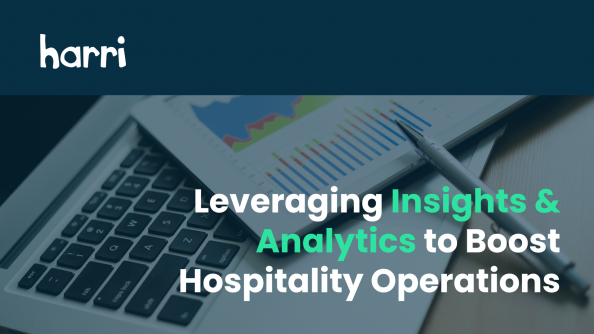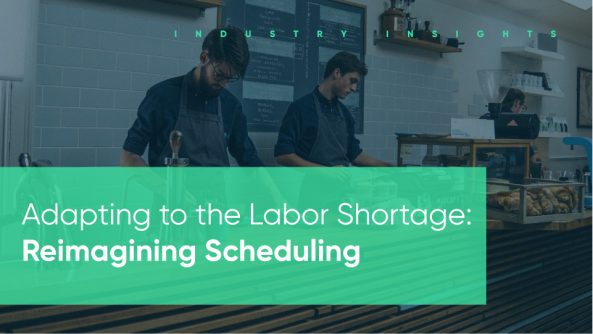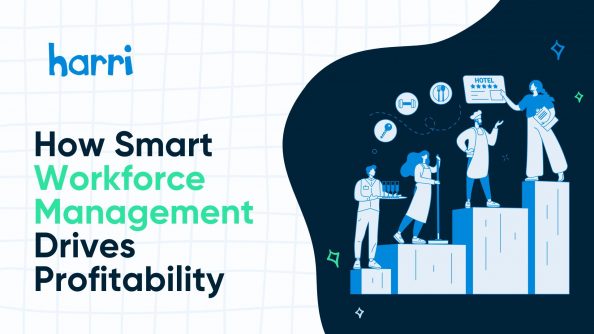Getting Out of the Weeds: Tackling Hospitality Burnout During Peak Seasons
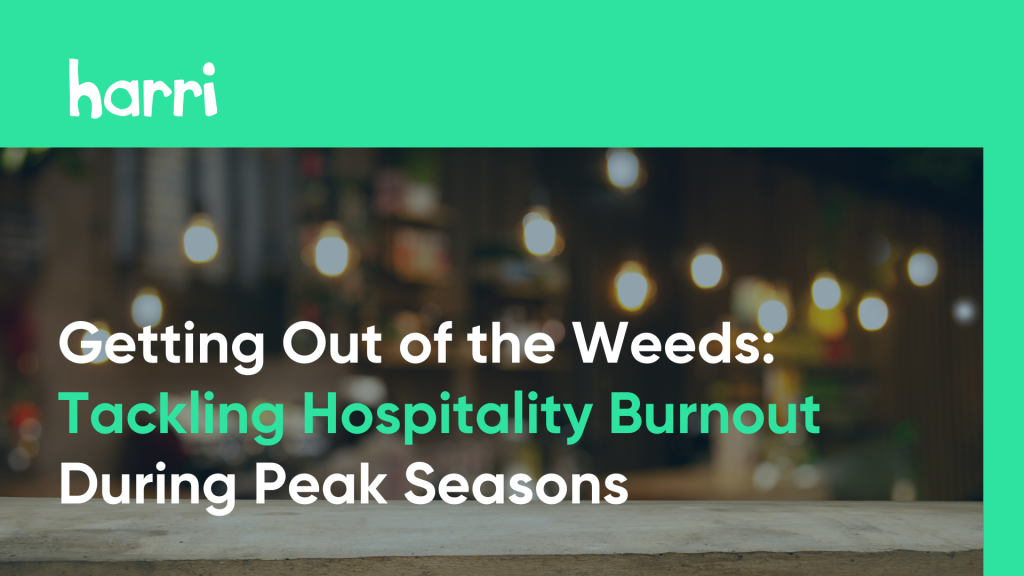
- By Harri Insider Team | December 18, 2023
As corporate and remote workers often experience seasonal slowdowns, frontline hospitality workers face a contrasting reality. Peak season in restaurants and hotels brings increased demands, longer hours, and elevated stress, risking employee burnout. Managing multiple locations is challenging, more so during these peak periods. To combat this, hospitality leaders must strategically plan, lead empathetically, and communicate proactively. Understanding and supporting their teams’ unique needs is essential to fostering a resilient, engaged workforce ready to excel in even the busiest seasons.

Recognizing and Mitigating Seasonal Employee Burnout
Symptoms of burnout and its impact on staff include:
- Physical and emotional exhaustion: Chronic fatigue, insomnia, increased illness, anxiety, and depression.
- Cynicism and detachment: Loss of interest in work, pessimism, isolation from coworkers.
- Feelings of ineffectiveness and lack of accomplishment: Low productivity, poor performance, feeling of inadequacy.
Seasonal burnout, unlike typical burnout, can simultaneously affect a large number of employees, amplifying its impact on your employees as well as your customers. To address this, there are several tactics you can employ to help improve your employee’s overall well-being and satisfaction with your company. Implement flexible, team-centric scheduling, mandatory breaks during peak periods, and a robust recognition program to celebrate collective efforts.
Providing seasonal-specific training in advance of peak seasons will help prepare staff for the unique challenges to come. Additionally, facilitating group-oriented wellness initiatives can foster a supportive environment. Crucially, train managers to promptly recognize and address burnout, ensuring a unified, resilient team in high-demand seasons.
Build a Culture of Engagement
The right solution for you might not be the right solution across the board as your employees and your brand are unique and have your own unique set of challenges, values, and ideals. When you are truly engaged with your workforce, you will not be left to wonder. Build a culture of engagement by encouraging frequent, open communication from your teams. This will help you be proactive about identifying potential stressors as well as help you get a pulse on how you can best serve your staff.
Open communication is best when it is regular, flexible, and adaptable. A pulse survey that you conduct once a year will not tell you as much as a weekly check-in that is easy for an employee to respond to while they are clocking in, for example. Establishing regular, flexible touch points will give your employees more opportunities to share their perspectives and also will give you consistent data so that you can make better, informed decisions.
Harness Harri Engage Technology to Tackle Seasonal Burnout
Harri Engage is the latest intelligent engagement solution designed to directly improve retention for frontline workers. This innovative employee engagement software offers actionable insights to help managers and operators proactively identify and mitigate burnout risks. By integrating with Harri IQ, it provides valuable data analytics and predictive metrics, empowering operators to make informed decisions.
Moreover, Harri Engage simplifies engagement by connecting with employees on their own terms, facilitating real-time feedback and recognition without adding complexity to the process. With these powerful tools at your disposal, your hospitality team gains the ability to better understand and proactively address seasonal burnout, ultimately fostering a resilient workforce that thrives even in the busiest of seasons.
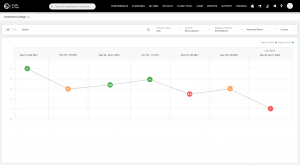
The Manager’s Role in Preventing Burnout
There is a clear correlation between management turnover and hourly staff turnover, highlighting the pivotal role your managers play in retaining employees. It’s mission-critical to provide support and resources to your managers, especially during peak seasons.
When managers are trained to recognize the signs of seasonal burnout, they will be better positioned to address it before it impacts customers. In the case of seasonal burnout, managers can find creative ways to approach this, whether it is by implementing more rewards and recognition programs, scheduling off-site team activities, or simply encouraging employees to take time off whenever possible.
But what about the managers? Surely they are also at risk of peak seasonal burnout. Help them by finding tasks that can be streamlined or taken off their plate. Give them more time to spend engaging with their teams and less time behind a screen in the back office.
For example, your managers will likely be occupied with an uptick in hiring activity during seasonal peaks. If they are armed with the tools to help streamline the talent acquisition process, they can devote more time to engaging with their teams and mitigating burnout risk. The most powerful hiring platforms will automate repetitive tasks, help screen employee prospects, schedule interviews, and handle onboarding all in one place.
Learning from Feedback: Adapting for Future Peak Season Success
The value of being able to proactively address employee burnout is multiplied tenfold when you take the time to hold a retrospective. Find out how your employees fared through the busy season and ask them questions about the good, the bad, and the ugly. Find out what would make it better next time and adapt your strategy accordingly. Take a pause to really understand what worked and what didn’t. Your employees will feel heard and valued, and your customers will reap the benefits of a fully engaged workforce.
From implementing flexible scheduling and fostering a culture of engagement to utilizing cutting-edge tools like Harri Engage, the key to effectively managing seasonal burnout lies in proactive planning, empathetic leadership, and embracing technology. By prioritizing the well-being of both employees and managers, hospitality leaders can ensure a resilient and thriving workforce, ready to meet the challenges of peak seasons head-on.
Discover how Harri Engage can transform your approach to seasonal burnout. Book a demo today to explore its intelligent engagement solutions, designed to elevate your team’s experience and retention.











